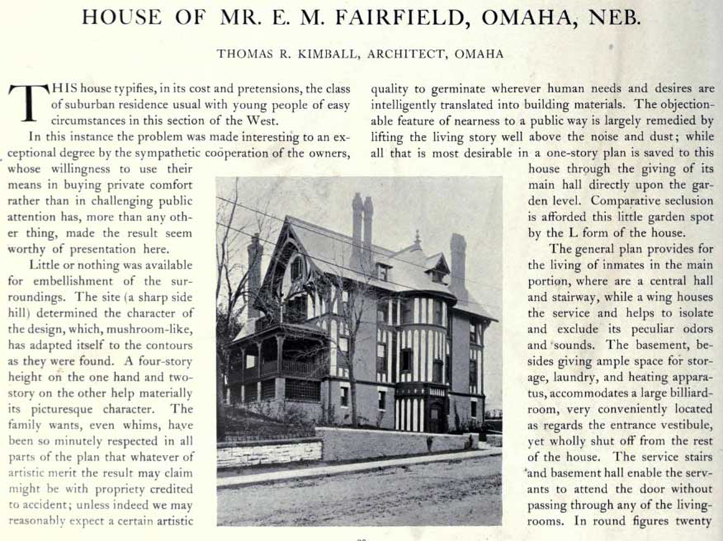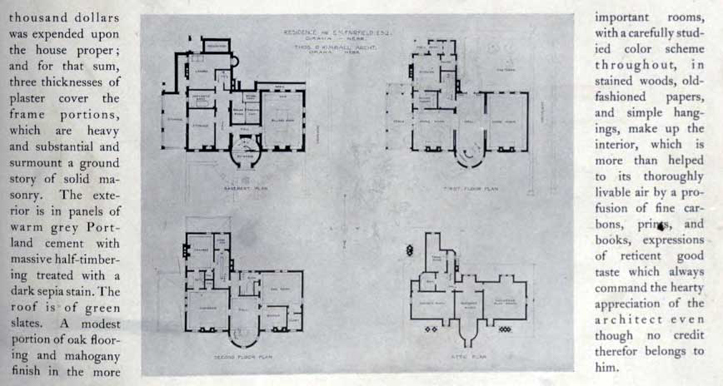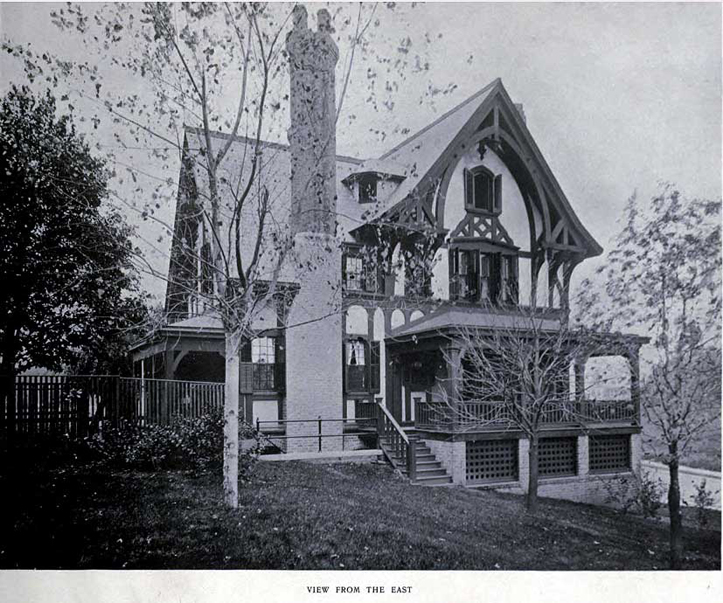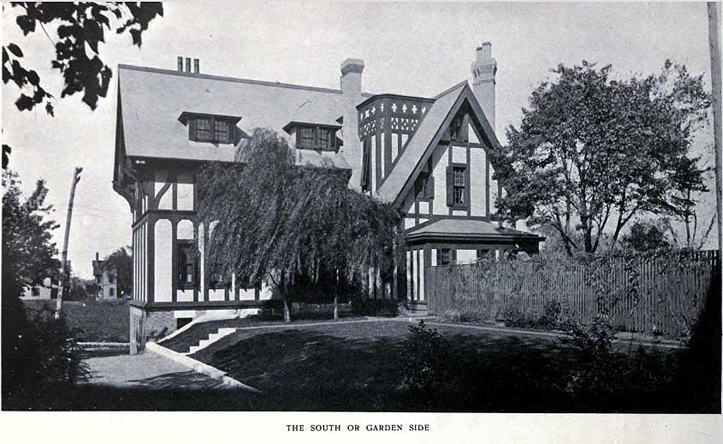

To navigate the Prospect Hill pages, use the menu dropdown at the top of each page
Meliora Clarkson Woolworth Fairfield was the daughter of James Woolworth, whose marker and family is discussed on the Woolworth page on this site. Meliora has a marker in the Woolworth family plot, but it may be a cenotaph or just a portion of her ashes. See the Fairfield/Kimball page for more on Meliora and the Woolworth's, as well as the Kimball's.
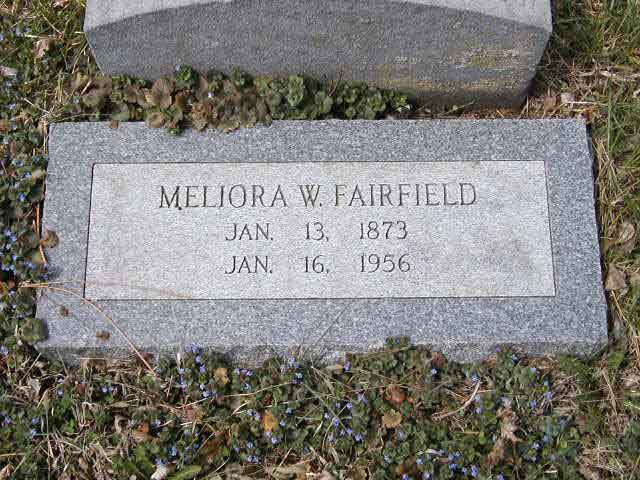
Meliora also has the now dubious distinction of being crowned the first Queen of Aksarben in 1895. Aksarben, which is Nebraska spelled backwards, was a charitable society to the public, but in reality it was a conclave of wealthy Omahans who restricted membership in the society to other wealthy Omahans. I say dubious because Aksarben has lost much of its aura of wealth and privilege over the past four decades. After the 1960's and their upheaval of all the cultural norms, the wealth and false prestige of the old Omahans began to wane and Aksarben's luster also faded. Aksarben closed down around 2003, but it really had been on its last legs by the early 1990's. The race track it sponsored closed down, and the coronations, once such a part of Omaha history, stopped. Still, Meliora was the first Queen of that society and that in itself is worth noting.
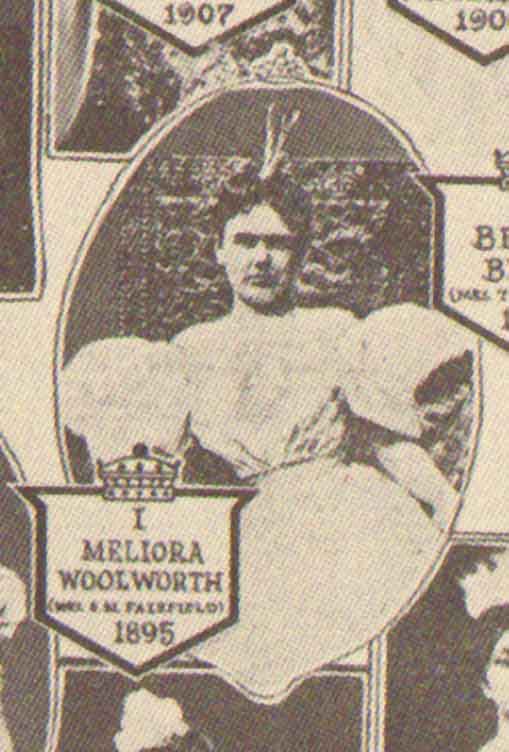
Picture of Meliora Fairfield as the first Queen of Aksarben, from "The Ak-sar-ben Story" by Arvid E. Nelson.
Meliora was 27 when she married Edmund Minor Fairfield in 1900 (at 27 she was almost superannuated, in comparison to the vast majority of women who married very young in those days). Edmund, who was born in Michigan, had been in Omaha for awhile, and was a rather distant cousin of Thomas "Stonewall" Jackson, of the Confederate Army under Robert E. Lee. Edmund worked for the Burlington and Missouri River Railroad while still in college, and after college he worked at the Equitable Trust Company of Omaha, and then went to work for Byron Reed and Company. In 1900 he became the manager of the Omaha Water Company, which, from what I've found through some quick research, was the precursor of the Metropolitan Utilities District, which is the water company for Omaha today. In 1912 Omaha purchased all property of the Omaha Water Company, after four or five different lawsuits between the City and the Water Company. Fairfield must have moved on after that because a 1916 article in the Monitor, a weekly Omaha newspaper published by an African Amercian group, has him as a real estate investor.
Below is Edmund's photo. As I've said elsewhere, anyone who wasn't a white male were considered unimportant in1 the founding of Omaha, and the only pictures I've found are of the men. If anyone has a better photo of Meliora they'd like to share, I would love to post it.
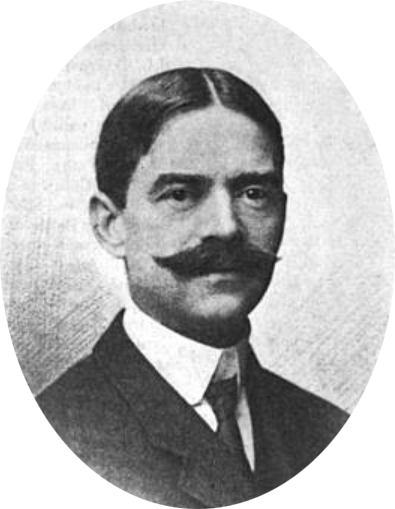
Edmund Minor Fairfield
While Meliora is supposedly at Prospect Hill (I now believe that her ashes are at PH, or it's a cenotaph), Edmund is not. On the FairfieldFamily.com site it is mentioned that Edmund is at Wyuka Cemetery in Lincoln, and it looks like he is buried in the family plot there, with his mother and several other siblings. This seemed odd to me because most married people are in the same plot, or at least in the same cemetery though I have seen other married couples buried in their respective family plots, from this era.
After Meliora and Edmund married, they had two children, Elizabeth Woolworth, born 1901, and Mary Wynne, born 1903. Meliora’s father, James Woolworth, built a grand house in Omaha at 2219 St. Mary's Avenue for her and her family, designed by Thomas Kimball, who designed a lot of the famous buildings in Omaha. Meliora was James' youngest child and he must have doted on her, to build her such a large and expensive house.
The Fairfields left Omaha in 1918 and moved to New York, but I’m not sure they sold the house on St. Mary's Avenue. I’m now thinking they may have rented it out because of something I’ll discuss later. An article mentions that Meliora and Mary Wynne were living in an apartment in the Colbert in Omaha in 1916, and were under quarantine because Wynne had contracted scarlet fever, but there is no way now of knowing if Meliora was in the apartment because she'd left Edmund, or because of the quarantine.
However, something was going on in their life because Edmund filed for divorce in 1922, citing desertion by Meliora. An article in the May 27, 1922 World Herald about their divorce says that Edmund appeared in court but that Meliora did not. It also said that the case "would be given to the juvenile authorities to investigate before a decree is granted." Their youngest child Mary Wynne would have been just under age 18 and must have gone with Meliora, for the juvenile authorities to be brought in. Edmund took a job with the Chicago Burlington & Quincy railroad, as assistant to the VP of Traffic, and apparently lived out his life in Chicago, dying in 1929 from stomach ulcers. He had been sick for some time, and had even gone to Phoenix for a time to try to recover.
Meliora lived with her daughter Elizabeth, wife of Lorne Gordon Campbell, in New York for awhile, and could even have lived with her daughter until she died. From all the articles I've read she came back to Omaha for visits, but lived out her life in New York and apparently never remarried. Her obit says the memorial services were in Omaha at Trinity Cathedral, but nothing about her actually being buried at Prospect Hill. This is why I've wondered if she's not buried here in Omaha. However, the Prospect Hill records say her ashes are buried there, which explains the stone with her name.
You can follow the movements of society people from small write-ups the papers used to put in the society columns before WWII changed everything (and I would definitely take some of their information with a grain of salt). The Fairfield girls spent summers and vacations in New York, Massachusetts, Connecticut, trips to Europe, and other high society cities on the eastern seaboard. They both went to Vassar, and married men they met in the east. The family was no longer an Omaha family, but became a New York family.
Daughter Elizabeth's first engagement was to Lewis Brown Gately of New York, in 1927. That must have been called off, because in 1928 she married Lorne Gordon Campbell from Ontario, Canada, who had served in World War I. I can't find much on her after Meliora died. I don’t know when Elizabeth died, and if anyone out there does I’d like to know.
Daughter Mary Wynne's first marriage was to Paul Wakefield Wolf, who was in the US Air service in San Antonio, where they also lived, in 1924; she had a daughter with him in 1925, named Wynne Fairfield Wolf, and was still married to him in 1926. In 1928 Meliora stopped in Omaha on her way to Manila, Phillipines ( I don’t see Omaha as being on the way to the Phillipines, then or now), to visit Paul and Wynne, so they were still married then. But, in late 1930 she was remarried to William Almon Wolff, an author and playwright who doesn't appear to have been very successful in his career, so something happened to her first marriage, death or divorce. William Wolff had also been the city editor on the New York Tribune, before quitting to write full-time. He had a bit of success with a play, and wrote some detective novels. Wolff died in 1933 at age 47, from a heart attack.
When Meliora died in 1956, Elizabeth was still married to L. G. Campbell and living in New York, and Wynne was living in St. Paul, Minnesota, listed as Miss Wynne Fairfield, so she apparently never remarried for a third time. She died in Minneapolis in February 1987.
While doing research on architectural styles around the turn of the century I ran across a two page spread that featured the new Fairfield house in Omaha, in a 1904 edition of "Architectural Review." The pictures of that house and the text, are below. It’s a real shame the house is gone, because it was unique.
